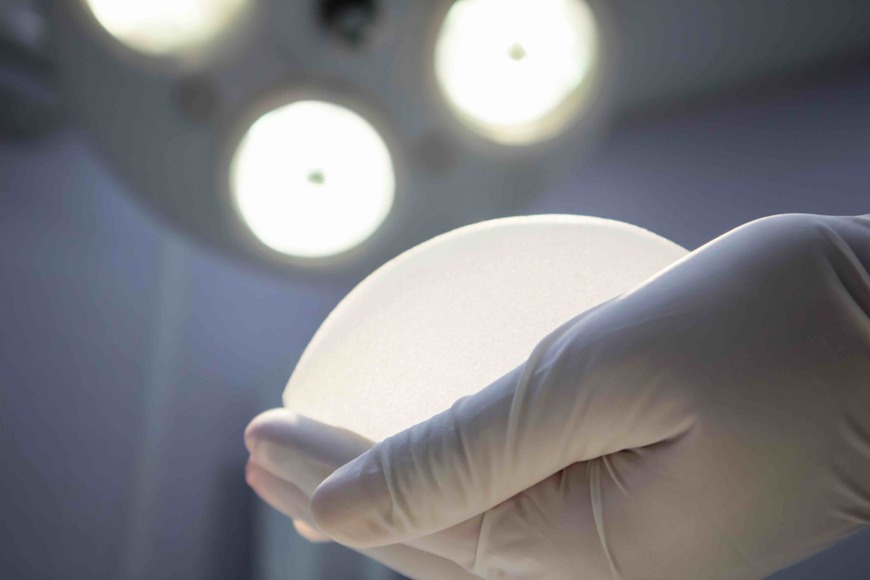Although rare, it’s important for you to know and understand complications involved with breast implants
When it comes to breast implants, it’s always better to be informed of the risks and complications before undergoing surgery. Capsular contracture, or ‘hardness of the breast’, is a breast implant-related complication that occurs when the capsule or scar tissue that forms around the implant becomes hard and painful.
Everyone’s anatomy is different, which means that each patient’s healing process is entirely unique. But while some factors that lead to the occurrence of these complications can be beyond the control of you or your surgeon, the risks can be reduced if you choose a skilled, experienced surgeon who prioritises your wellbeing, rather than agreeing to what you ask for despite knowing it could cause future issues.
As with any surgery, it’s important to be your own advocate. Do your research and find a plastic surgeon who takes his time and discusses all aspects of the procedure with you, including the possible risks and complications, and the very important aftercare.
A lot of the time correct and suitable implant selection based on a patient’s height, the width of shoulders and hips, chest anatomy and measurements, and the thickness of your breast tissue will minimise the risks. Another important factor that will reduce the risk, is to carefully follow your surgeon’s pre- and post-surgery instructions.
In this article, Mr Allen Rezai, Consultant Plastic, Aesthetic & Reconstructive Surgeon in Harley Street London, shares information about capsular contracture. Although breast implant-related complications are rare, especially if you choose an experienced plastic surgeon, it’s still important for you to know and understand all the complications involved, how it can be prevented, or the risk minimised, and what treatment options are available if you experience this complication.
This article will not take place of a one-to-one consultation, nevertheless, it can be useful. Remember, an informed decision is the best decision, and you should make sure you know all aspects of a procedure before you commit.
1. What is capsular contracture?

Once a breast implant is in place, the formation of a tissue ‘capsule’ or scar tissue around the implant is a normal part of the healing process. The body automatically forms a capsule (barrier) like this around any object it recognises as foreign as a protective measure. The tissue capsule around the implant is usually soft and flexible. It can be slightly firm, but not noticeable, and it helps to keep the implant in place.
However, in a small number of patients, this capsule of scar tissue tightens, becoming unusually hard, which starts to contract around the implant. In severe cases, this can distort the shape of the breast and even cause pain.
This is called capsular contracture. As the capsule starts to contract around the soft implant, the breast implant starts to feel firm and gradually looks rounded, and is usually pulled upwards.
Prevention is key with all types of complications, however, it is not known what the actual cause is behind capsular contracture. There are several discussions and opinions regarding the matter, but none have yet been proven. While there’s no way to prevent capsular contracture occurring, there are ways to help lower the risk. This is something that your plastic surgeon should discuss with you at your consultation.
2. What are the symptoms of capsular contracture?

Symptoms usually emerge gradually and may be noticed first as a feeling of mild tightening, and slowly developing into a high-riding or misshapen breast. The firmness usually starts from the centre and works its way out. As the firmness increases, the breasts may feel tight or even painful, especially when lying on them. The breasts can appear very round and pull upwards, and visible rippling may also occur.
Normally when capsular contracture is detected in its early stages, it can either be reversed or prevented from developing into more severe types. That is why aftercare is of the utmost importance, and Mr. Allen encourages patients to keep their complimentary annual check-up with him since it only takes five minutes but can help to prevent a lot of discomfort and headache down the road.
3. Types and treatments of capsular contracture

The severity of capsular contracture is rated using a gradin system known as The Baker System. It includes four types:-
In types I and II capsular contracture, Mr. Allen advises patients to massage their breast using a specific compression technique to try and break the capsule and prevent it from developing further. Proper massage technique, adequate duration, and frequency are key for this method to work.
In types III and IV, treatment for capsular contracture is usually surgical, in the form of capsulectomy, which removes the capsule and the implant entirely. The ideal scenario would be to allow the breast tissue to recover for a few months before re-augmentation. However, in most cases, patients choose to re-augment at the same time as the capsulectomy procedure.
4. What causes capsular contracture, and how to reduce the risk?

The risk of developing capsular contracture is about 5%, it may occur on one side, both sides or not at all. Prevention is key with all types of complications; however, the actual causes behind capsular contracture are still not known, and there are many discussions and opinions surrounding this matter, but none have been proven yet.
Predicting who will develop capsular contracture and when it will happen is nearly impossible. There are however several factors that may increase your risk. These include:
- Smoking
- Autoimmune disorders like Lupus
- Severe trauma to the breast
- Hormonal changes during pregnancy
- Inflammation caused by direct sunlight during the first few months after surgery
- Radiation therapy (following Breast Cancer)
- Hematoma (a break in a blood vessel, causing localised bruising or blood clot)
- Seroma (a collection of fluid under the skin)
- Bacterial infections
- Silicone molecules leaking into the pocket surrounding the implant
- Sub-glandular Placement – You may be more likely to develop capsular contracture when your implants are placed over your muscle
- Smooth implants
While it’s impossible to prevent capsular contracture from occurring in every patient, there are several ways to lower a patient’s risk of developing this condition. Using textured implants is one, however, due to the association of BIA-ALCL with textured implants, some patients prefer smooth implants.
Another factor is starting a daily compression massage, about 4 weeks after surgery for about 3 months, this will improve the healing and help the implants to settle in place faster and prevent the capsule from becoming hard. Finally, submuscular placement (behind the chest muscle) of implants is another factor, however, this option would not be suitable for everyone as placement of the implants depend on the indications the patient has.
Each surgeon has their own recommendations, and Mr Rezai prefers to discuss all aspects of breast implant surgery with his patients, including factors that may help them reduce the risk of complications and capsular contracture. He also discusses recommendations with them during aftercare at the initial consultation and reiterates the relevant instructions during each routine follow up appointment.
5. What is an enbloc capsulectomy?

A capsulectomy procedure, removal of the capsule, is always performed at the same time as a breast implant removal or replacement.
Sometimes patients request an enbloc instead of a capsulectomy. Enbloc is when the implant and the capsule are removed as one unit with the implant still inside the intact tissue capsule. There are some instances where an enbloc capsulectomy procedure is not possible or not the best decision, however.
If the capsule is too thin and delicate to remove in one piece, your surgeon normally removes as much of the capsule as possible with the implant and then will carefully remove the remaining scar tissue.
Another situation that could prevent enbloc with total capsulectomy is if the capsule is attached to the chest wall. This can occur in severe types of capsular contracture. In these instances, your surgeon will try to remove as much of the capsule as possible but parts of it may remain in place, however, all steps possible will be taken to allow proper healing including sterilising the remaining capsule. In most cases, the leftover capsule does not pose any problems to the patient.
Normally patients request an enbloc capsulectomy when the implant has ruptured within the capsule, however, a thorough consultation is necessary in order to determine your suitability for an enbloc capsulectomy, and sometimes the decision has to be made by your surgeon during surgery.
Final advice from Mr Allen Rezai...

It should be noted that secondary surgery is always more difficult than primary breast implant surgery, for several reasons. First, the presence of scar tissue makes it more difficult to predict a good result.
In addition, the surgeon is dealing with the stretching of tissues and anatomical changes caused by previous implants. The recovery time may also be longer depending on the severity of the capsular contracture.
“Prevention is always better than cure”, Mr Rezai explains, “which is why it is important to find an experienced and qualified plastic surgery for your surgery and also adhere to your surgeon’s recommendation in terms of preparation and aftercare.”
Here Mr Rezai shares a checklist of what he believes to be the most important considerations to be taken into account when contemplating beast surgery and choosing a surgeon:
At Allen Rezai MD, All Procedures Are Tailored To Your Needs.






